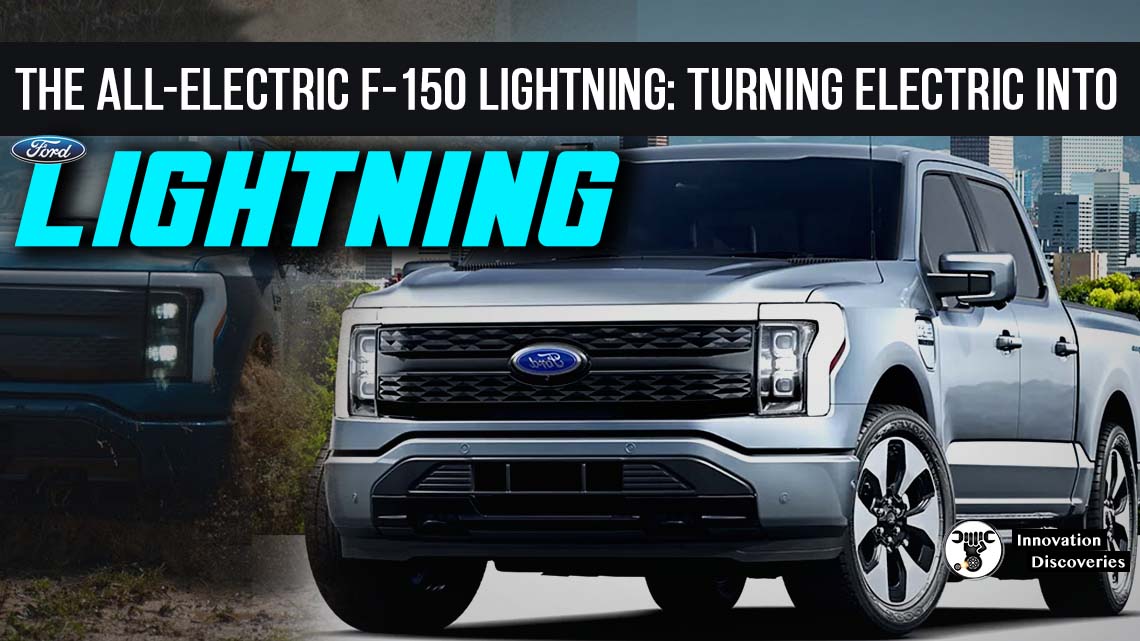
Ford has just unveiled the new all-electric F-150 Lightning.
Where some EVs in this space look like awesome super trucks, like the Hummer EV, or rejected props from Blade Runner, like the Tesla Cybertruck the F-150 Lightning appears to be a truck that also happens to be all-electric.
Now, that doesn’t mean it’s boring.Far from it, actually.

Based on the early specs, the Lightning offers up to 563 horsepower, 775 pound-feet of torque, 0 to 60 acceleration as quick as the mid-four second range, and the base price around $40,000 in this video,
We are going to explain what you need to know about Lightning, its key features and specs, and what you can expect when it goes on sale.
It really helps us out.

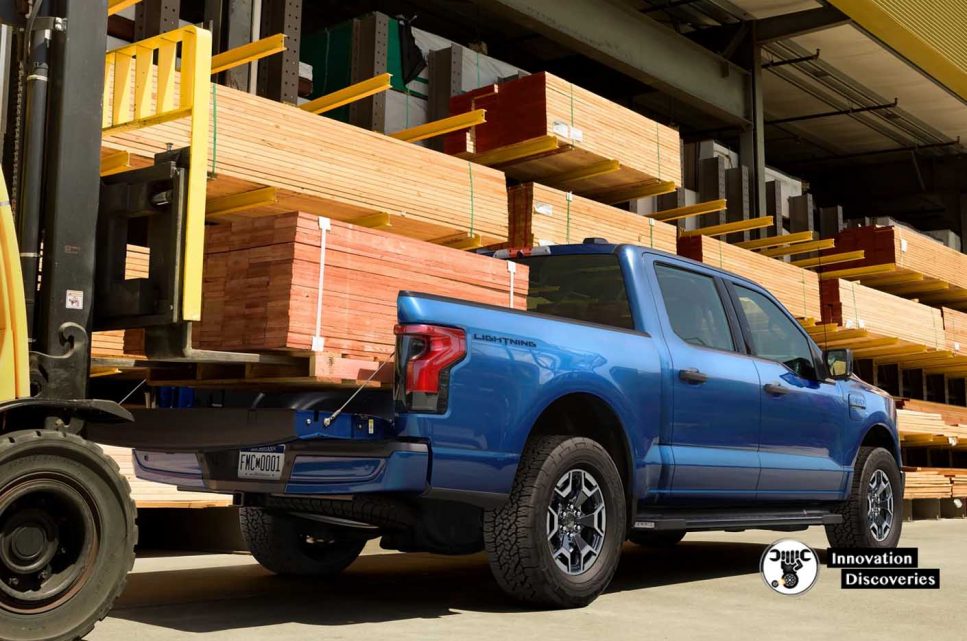
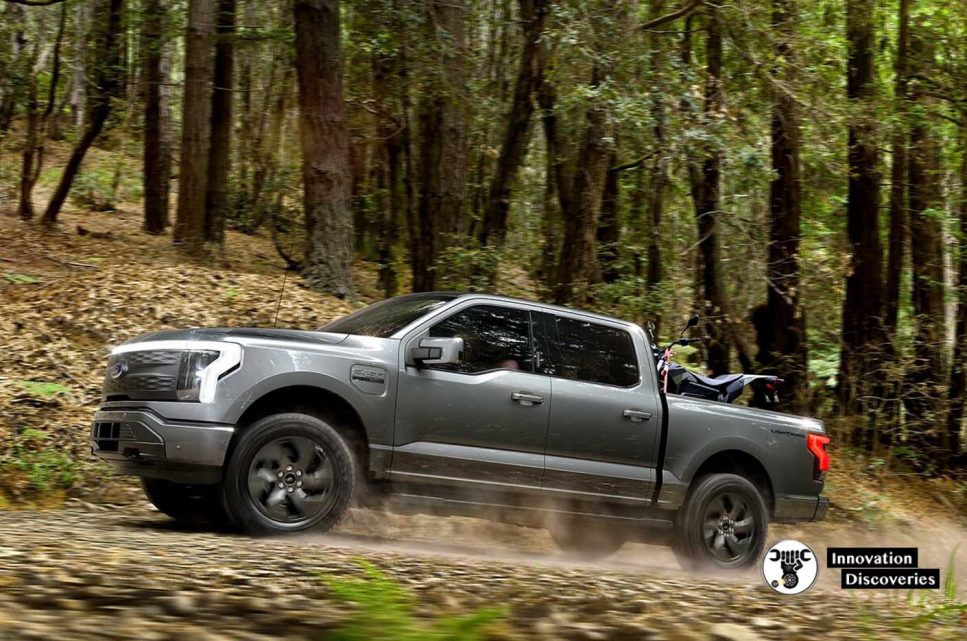
Overview
From how I see it, there are two ways to look at the new Lightning. One is as a pickup truck, which we’ll talk about first.
The second is as a big battery that you can drive. More on that in a bit.
First, yes, this is essentially an F-150 Super Crew or Four-Door with the short, 5, and 1/2 footbed.
I mean, down to the same or similar exterior and interior dimensions as a regular F-150.
The difference is, of course, it comes standard with two electric motors, one for each axle one on the front, one on the rear so it’s all-wheel drive as well.
Battery
Like many other EVs, the Lightning is available with two battery sizes- a standard range and an extended range pack.
And these affect power output, acceleration, range, towing, and payload, amongst other things.
Based on the early figures, the standard range battery gets you approximately 230 miles of range, 426 horsepower, 775 pound-feet of torque, and a max payload of 2,000 pounds.
The larger battery increases range to 300 miles, and with the tow package, it offers 10,000 pounds of towing capacity.
We’ll talk about that more in a bit.
This configuration also gets you that 563 horsepower and mid-four-second 0 to 60 acceleration, which Ford points out is quicker than a Raptor.
They’re doing that Lightning name proud, thankfully.

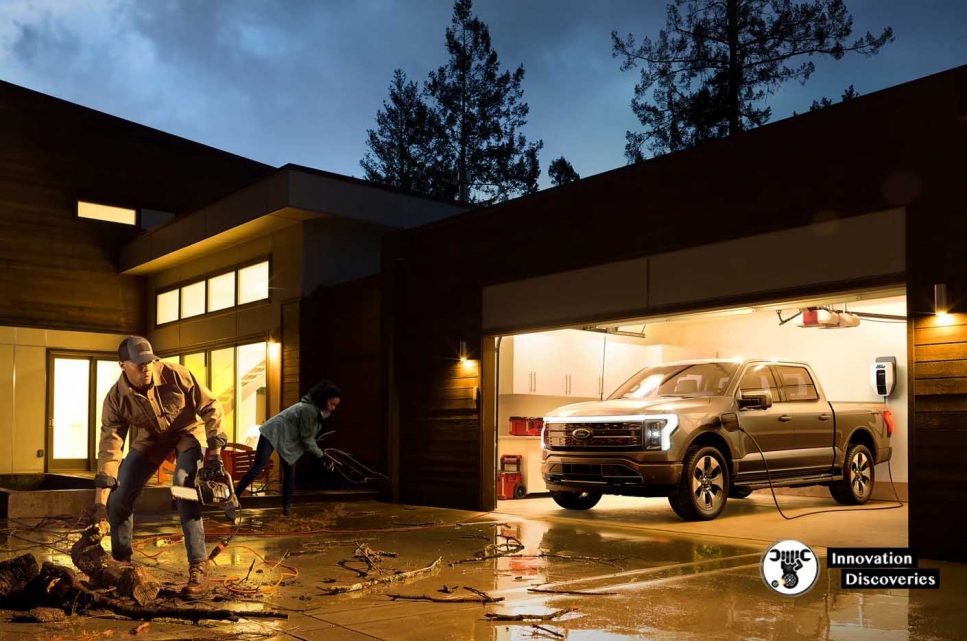
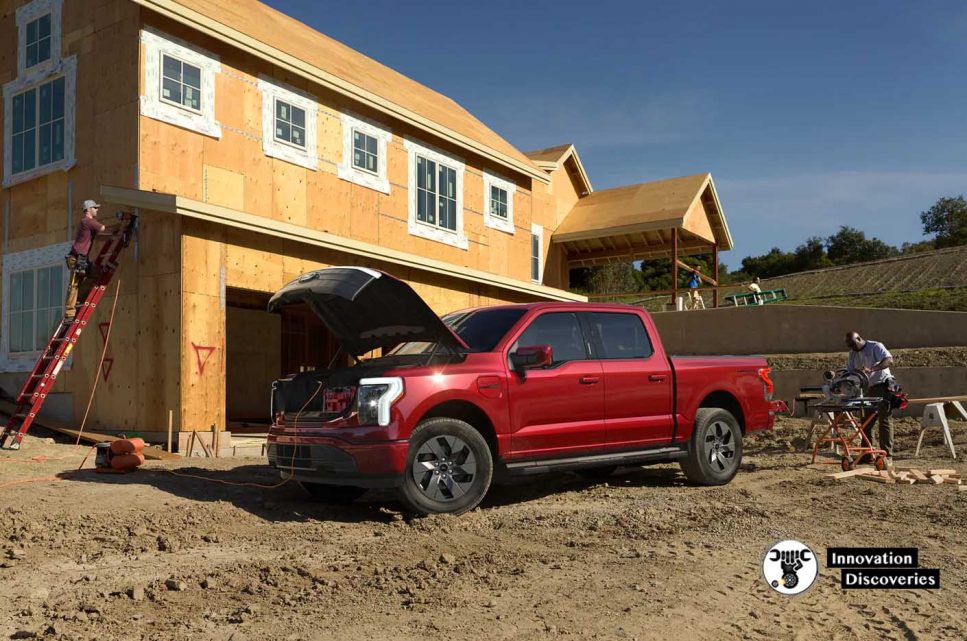
Body
An EV F-150 also means big structural changes underneath the truck.
Ford says the frame is entirely new to accommodate, amongst other things, the batteries, electric motors, and the independent rear suspension.
Yes, the Lightning has an IRS, and Ford tells us it’s a unique design for this application.
Also, because there’s no engine, what do you do with all that space under the hood?
Well, like most EVs, you turn it into a front trunk, frunk.
But in the case of the Lightning, that frunk is power-operated and
has 400 liters or 14 cubic feet of cargo space which, again, Ford points out, is large enough for two sets of golf clubs.
There are four power outlets and two USB ports up there as well.
Also, that space is water-resistant and has drained, so there are lots of storage opportunities in there.
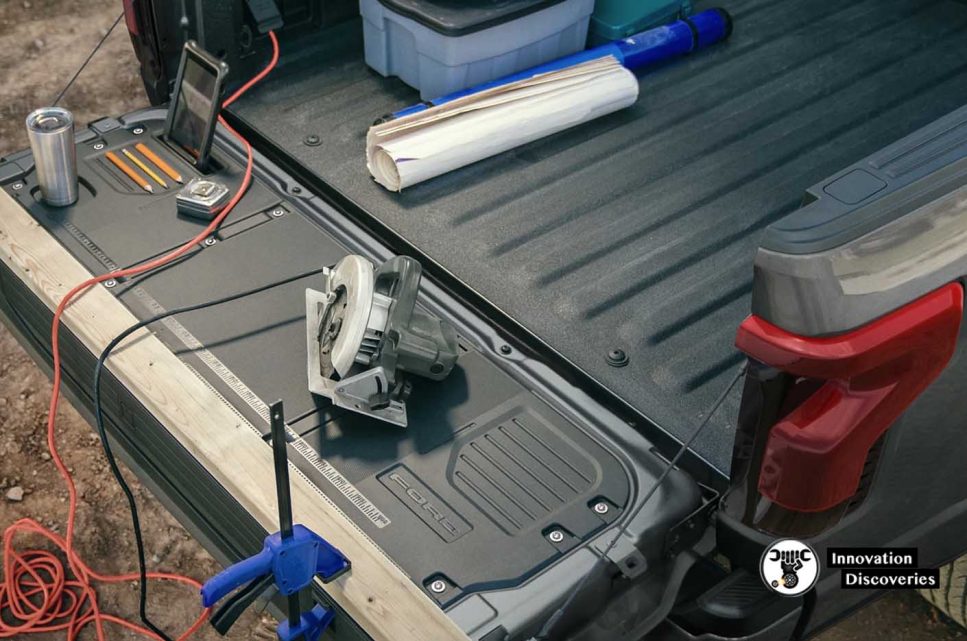
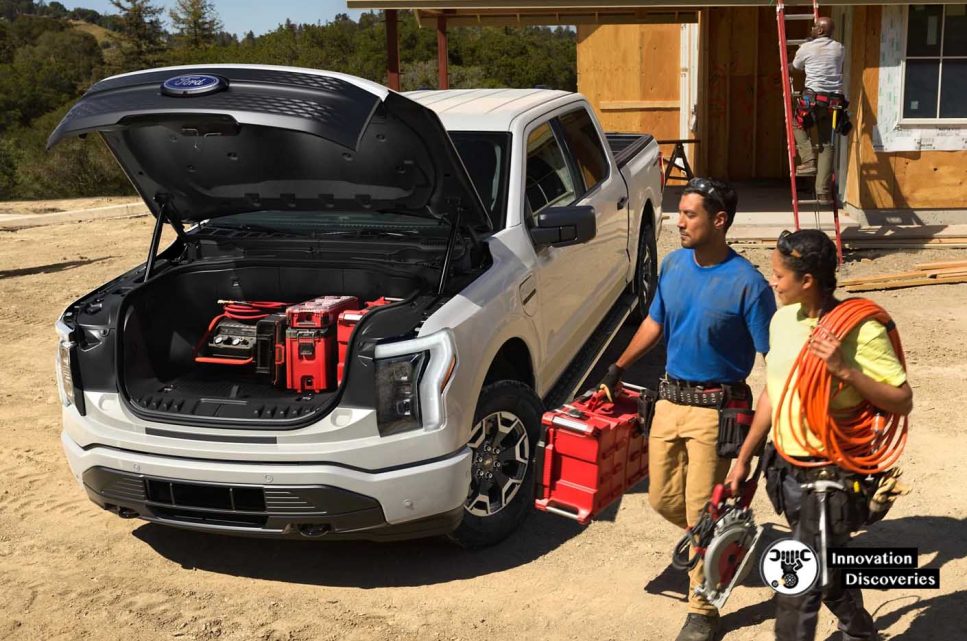
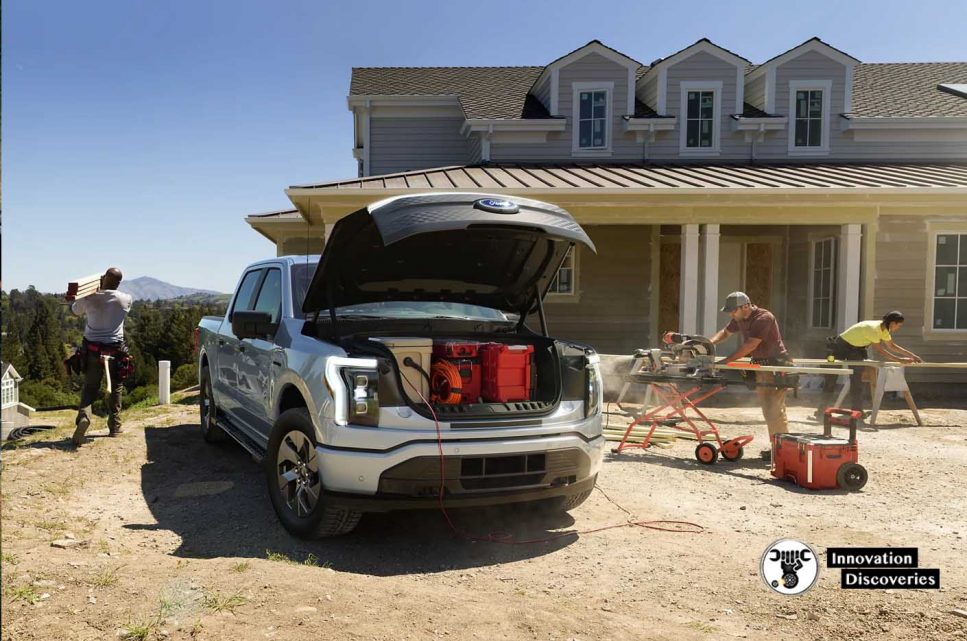
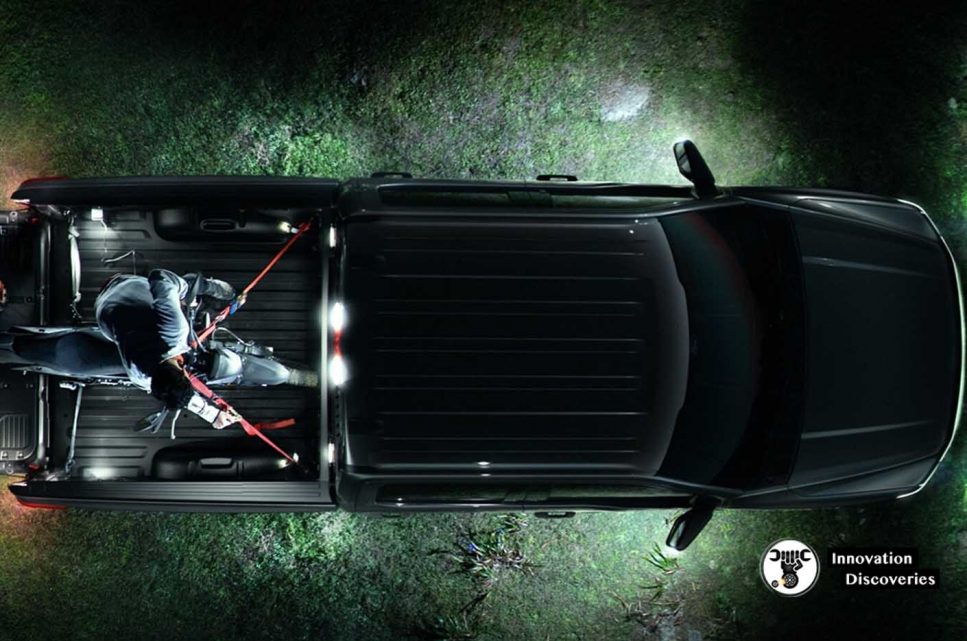
Let’s talk about pricing
So far, Ford has only said that the base price is just under $40,000, but that doesn’t include the mandatory destination fee, which usually is about a grand for Ford.
So figure about $41,000 for a base Lightning with the standard-range battery.
We don’t know the features included with that version, but we do know it’s configured more like a commercial or fleet trim level or spec.
Even so, forget it’s a pickup for a second.
A 420-horsepower two-motor and all-wheel-drive EV for 40 grand is a pretty crazy value compared to the other car options out there.
And that’s before adding the extended-range battery, which you can do to the base model.
We don’t yet know the price of that extended battery, but let’s assume, worst case, $10,000.
Well, then you have a $50,000 EV with 563 horsepower, a 300-mile range, oh, and it’s a truck, too.
That being said, most shoppers will probably in the upper trim levels- XLT, Lariat, or Platinum and topped out with all the options and additions, including the new 15 and 1/2-inch large center touchscreen, the Lightning will probably reach close to $90,000 again, all topped out.
And that isn’t far off the price of a fully-loaded F-150 Platinum of the regular variety.
Also, I should say that these prices don’t reflect the $7,500 federal tax rebate or any other incentives currently offered by your state, city, or power company.
Just remember that oftentimes, these incentives aren’t straight price deductions from the vehicle.
They can depend on your tax situation, so your mileage will vary or I should say your discount will vary.
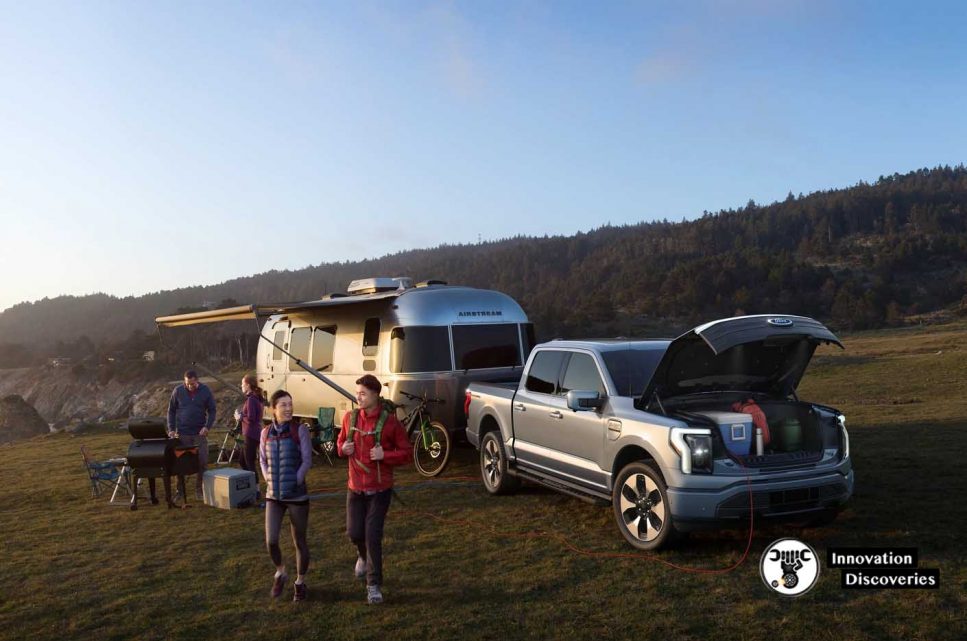
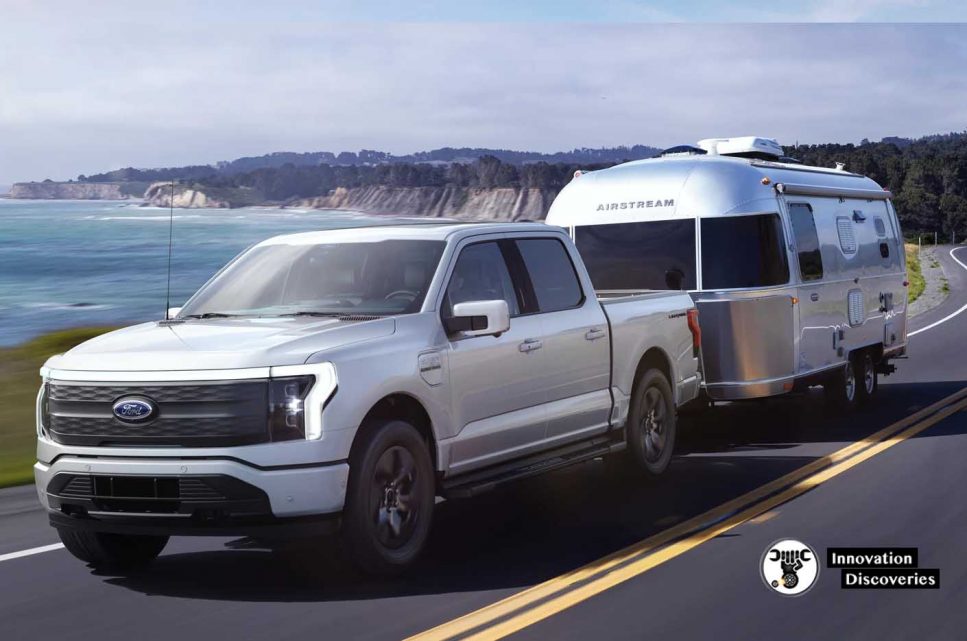
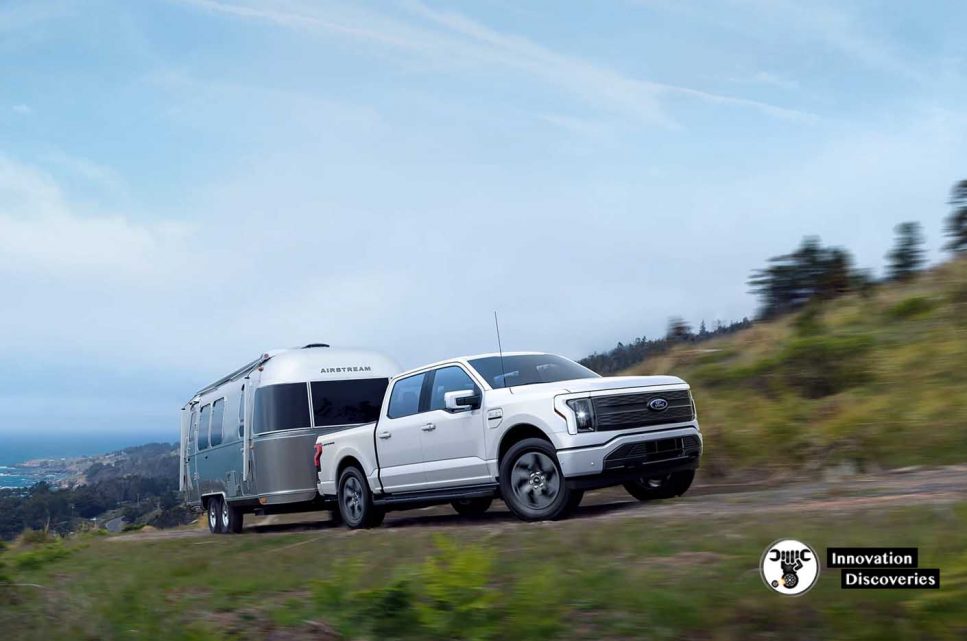
Drivable Battery
So the other way to think about the Lightning is that it’s a big, drivable battery, right?
When you opt for the extended-range battery, it comes with Ford’s 80-amp home charging station. Add an inverter to that equation, and you can power your home with your Lightning.
Through a feature Ford calls Intelligent Backup Power, the lightning can supply 9.6 kilowatts worth of energy.
That’s enough to run your house for days and considering the events of the past year or two, that’s a pretty cool-sounding idea.
Ford also says it’s working on a feature that, during non-emergency times, it uses the truck’s battery to power your home during high-cost peak energy hours and then charges the truck when energy is less expensive.
It’s a way to save you a bit of coin.

Features
The Lightning also offers a bunch of tech and features from the new F-150, like Pro Power Onboard that generator system that’s in the bed of that truck.
In the Lightning, this feature can supply 2.4 kilowatts at the base level, while higher trim levels offer a combined 9.6 kilowatt 7.2 from the outlets in the cab and the bed and 2.4 from the outlets in the front trunk, or frunk.
There’s also Ford’s upcoming hands-free driving tech called BlueCruise which works on select highways and uses cameras to monitor the driver to make sure they’re actually in the driver’s seat and not in the back seat or asleep.
You can also get the flat fold-out interior work surface feature and the fold-flat front seats. With an app, you can use your phone in lieu of a key.
And like with the Mach-E and standard F-150, the Lightning will also receive over-the-air updates, which Ford cutely calls “power-ups.”
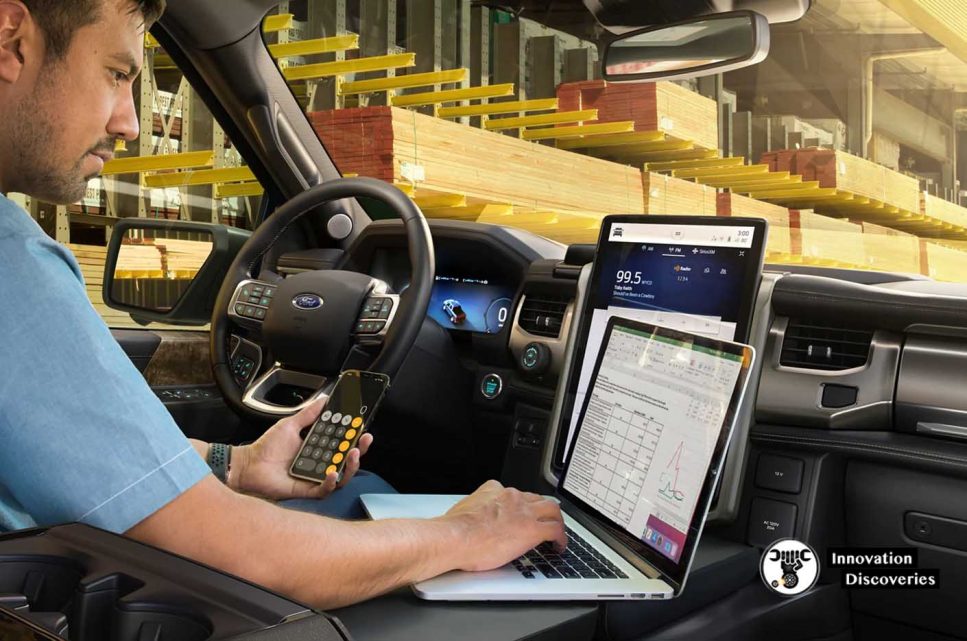

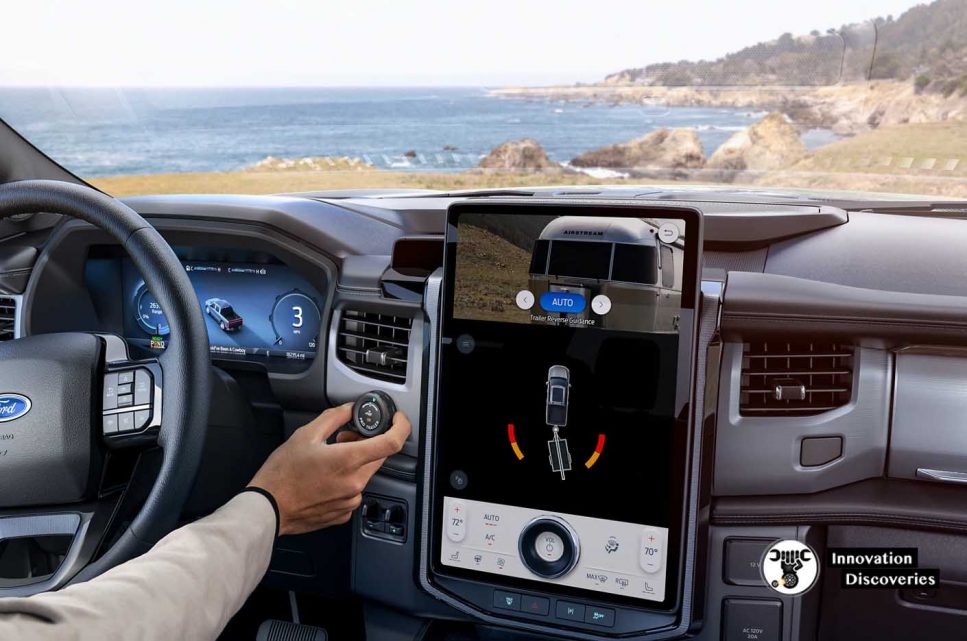



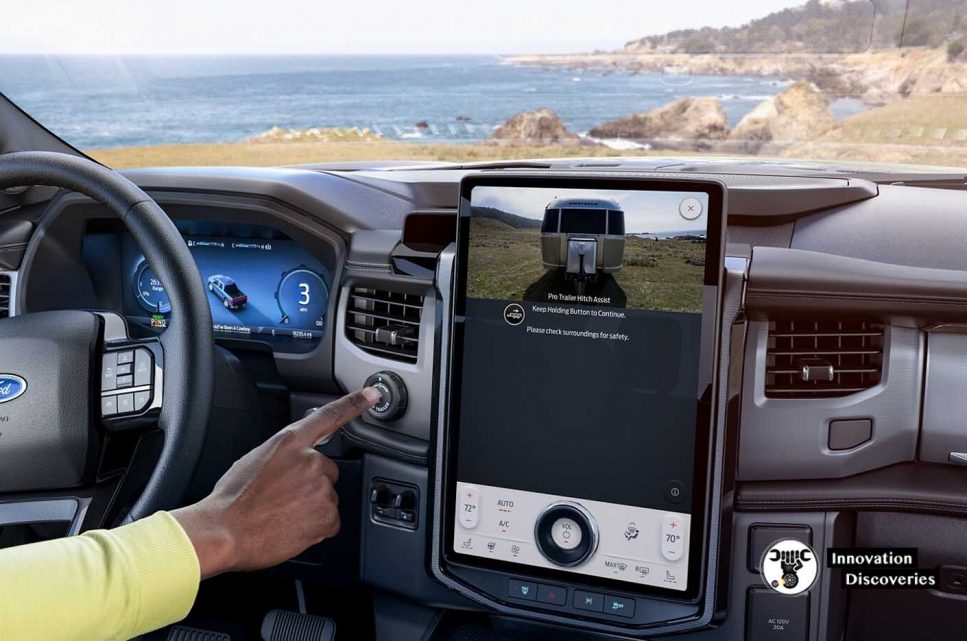

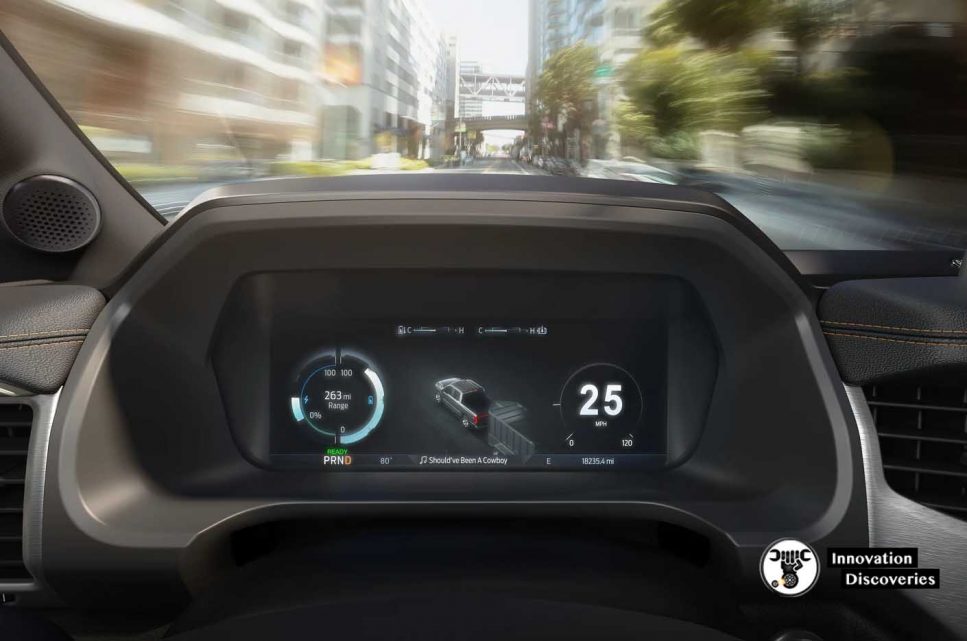
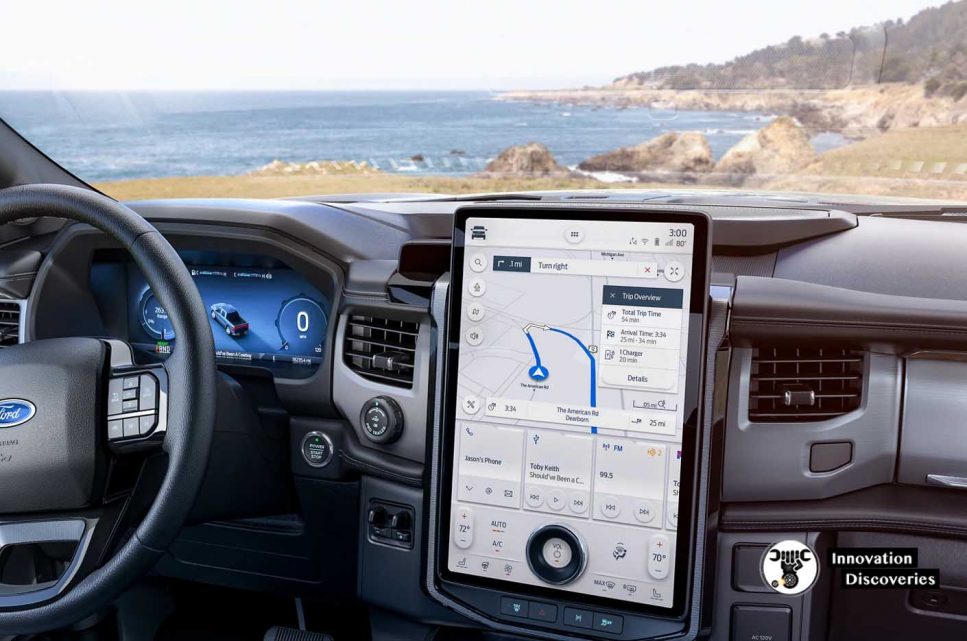
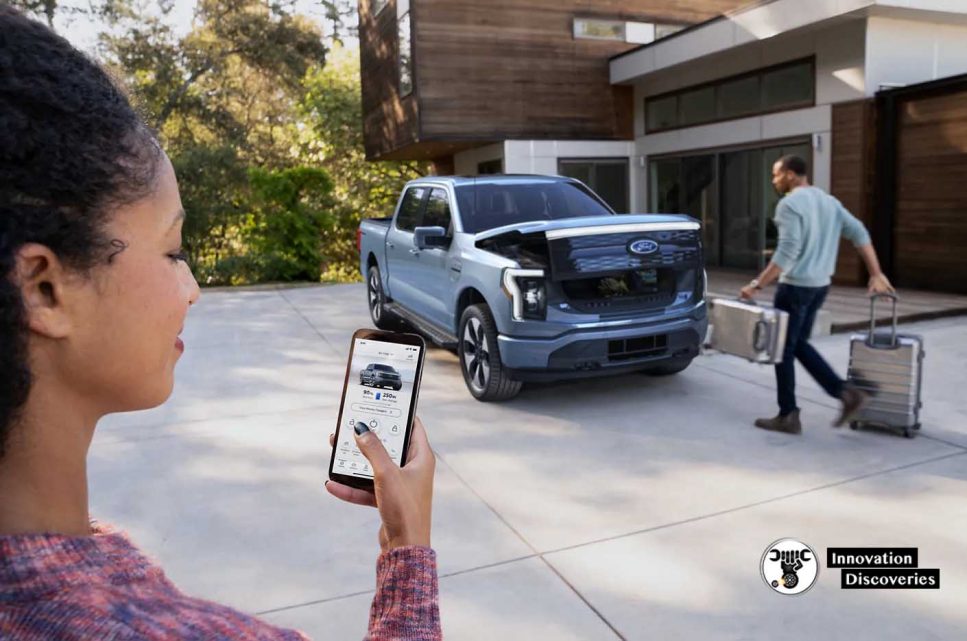
Charging
Now, EV trucks come with some additional consideration when you use them like trucks.
Simply hauling and, more significantly, towing can make big impacts on your range, and not in a good way.
So like with the Mach-E, the Lightning adjusts its range projections based not only on the route traffic and topography, but on driver and usage, and well.
And it remembers all these things, too.
On top of that, the Lightning integrates the onboard scales tech that just debuted on the F-150, where the truck uses its sensors to approximate the additional payload in the truck, and it adjusts the range accordingly.
The Lightning also does the same when you tow assuming you have
the tow package, of course by sensing the tongue load.
And when you tell it the size of the trailer, it figures out the air resistance and factors that into the range estimate as well.
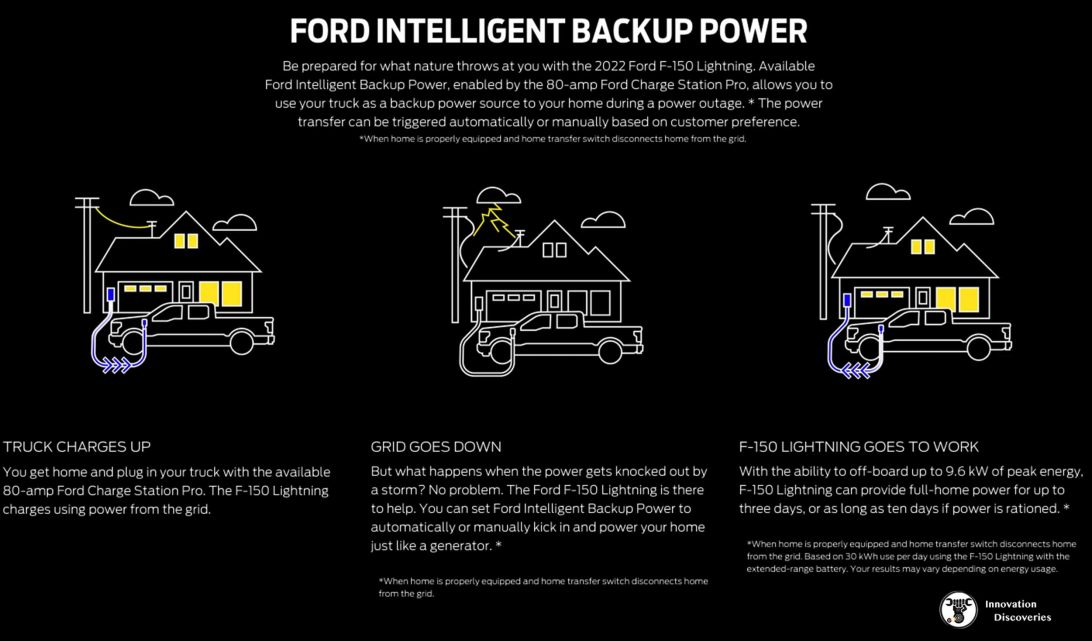
Conclusion
All of this sounds incredibly attractive, and of course, it does.
It’s a new vehicle launch– it should.
But we’re looking forward to getting our hands on the Lightning to evaluate how this all works in the real world.
Right now, speaking to the information that’s currently available, this is a highly compelling alternative to the Tesla Cybertruck or the Rivian R1T.
But of course, we’ll see how this all shakes out when the Lightning arrives in spring 2022.
If you have any questions or want to know more, leave a comment below. Thank you guys!
READ: TESLA CYBERTRUCK TUG-OF-WAR VS. FORD F-150 WAS COMPLETELY POINTLESS
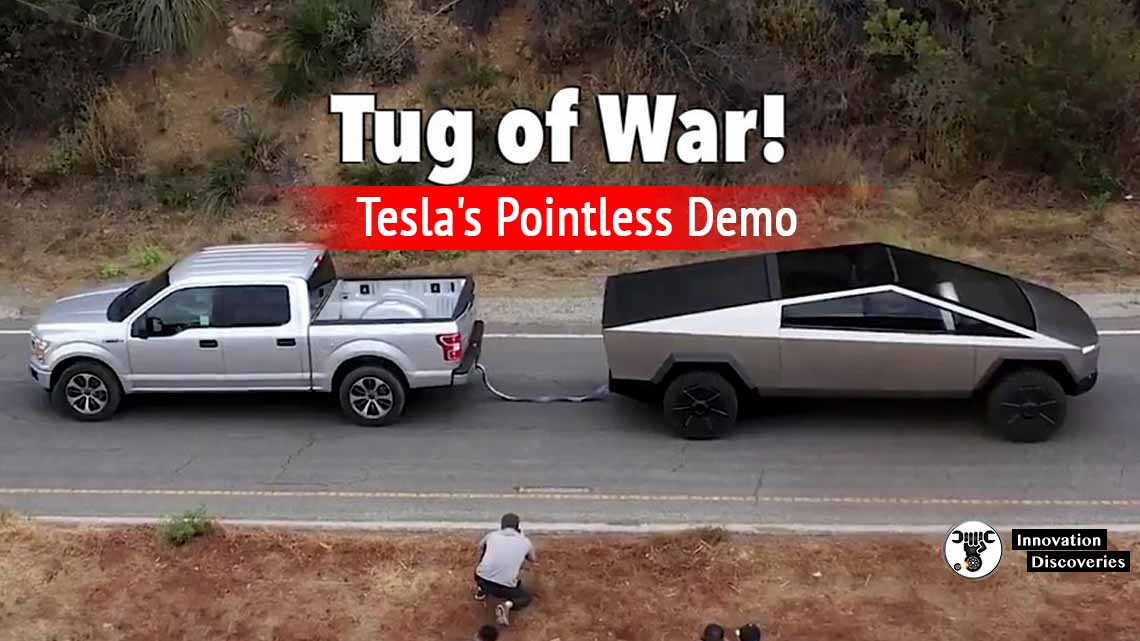





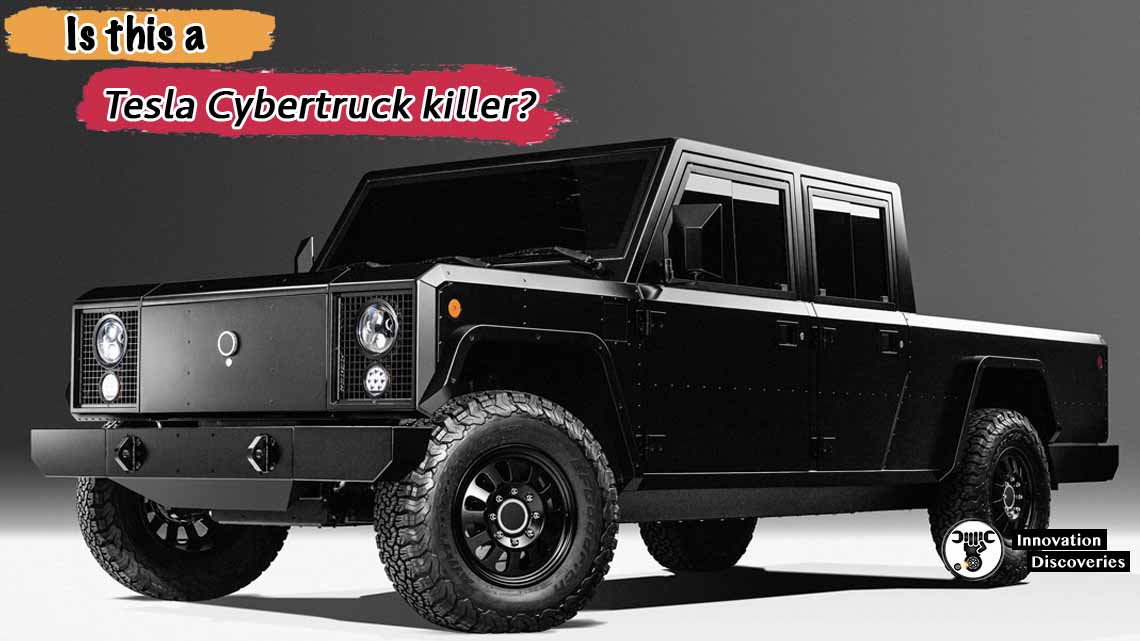
One Comment